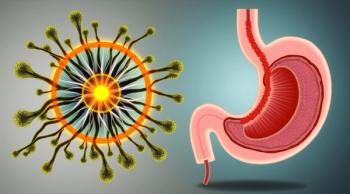
Danger Signal Limits Hepatitis C Infection
Despite the fact that hepatitis C virus (HCV) persists chronically in about 80 percent of those infected, some liver cells remain free of the virus even after many years. Now Sung Key Jang of Pohang University of Science and Technology, South Korea, et al. explain that paradox. During chronic HCV infection, a cellular protein, HMGB1, helps restrain viral reproduction. That prevents HCV from sweeping the liver, and results in a lower blood burden of virus than in the case of hepatitis B. This first description of HMGB1-related responses triggered by HCV infection is published in the September 2011 issue of the Journal of Virology.
The researchers show further that HCV-infected cells secrete HMGB1 proteins into the extracellular milieu. There, these proteins trigger a receptor on the cytoplasmic membrane, called TLR4, causing both an interferon response, which fights the virus, and an inflammatory response.
Two different responses coming from the same receptor at the same time is a common phenomenon. But that can make designing drugs all the more complicated. Boosting the interferon response could vanquish the virus, but the inflammatory response would be harmful. However, Jang says that it might be possible to get the one response without the other. If HMGB1 in the TLR4 receptor is like a hand that fits nicely in a glove, thus triggering both responses, perhaps a drug could be fashioned which could fit a piece of the receptor, like two fingers in a glove, thus triggering only the interferon response. This is an unpublished hypothesis, says Jang, but one that his group is working on.
In the paper, the researchers note that HMGB1 is a "danger" signal. The Danger model of immunology, derived by Polly Matzinger of the National Institute of Allergy and Infectious Disease, NIH, posits that immune responses are initiated by signals from damaged cells. Rather than distinguishing between "self" and "nonself," as per conventional wisdom, the Danger model suggests that when cells are stressed, injured, or killed (by external forces rather than through so-called programmed cell death), they give off alarm signals that activate the immune system to clear the damaging agents. www.direct-ms.org/pdf/ImmunologyGeneral/DangerModel.pdf
About 18 million people worldwide are infected with HCV. That virus causes inflammation (hepatitis), massive death of liver cells (cirrhosis), and hepatocellular carcinoma. Liver cancer, primarily hepatocellular carcinoma, which is also caused by heptatitis B virus, is the third leading cause of cancer deaths worldwide, and the ninth leading cause of cancer deaths in the United States, according to Morbidity and Mortality Weekly Report.
Reference: J. Ha Jung, J. Hoon Park, M. Hyeok Jee, S. Ju Keum, M.-S. Cho, S. Kew Yoon, and S. Key Jang, 2011. Hepatitis C virus infection is blocked by HMGB1 released from virus-infected cells. J. Virol. 85:9359-9368.
Newsletter
Stay prepared and protected with Infection Control Today's newsletter, delivering essential updates, best practices, and expert insights for infection preventionists.




